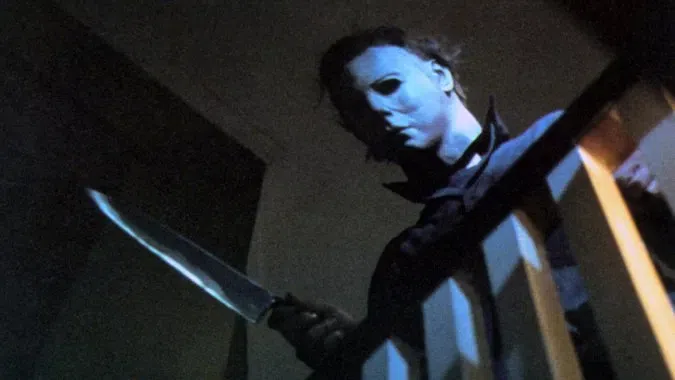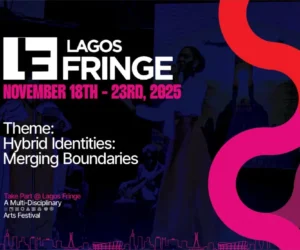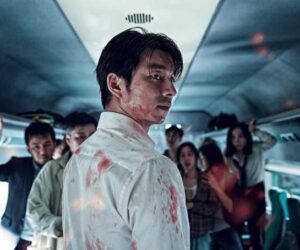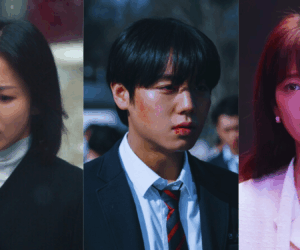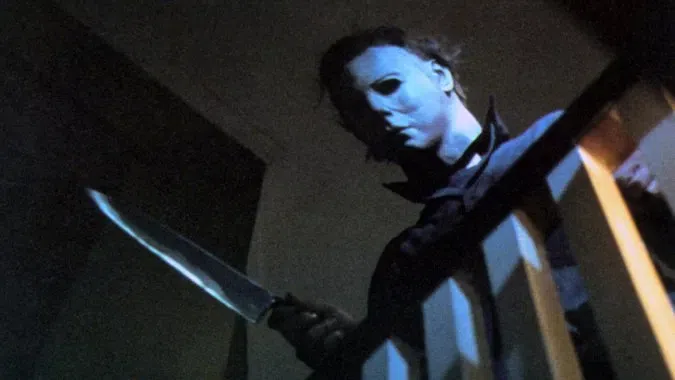
Very often, I see that the thriller and horror genres of film or books are used interchangeably, and it’s easy to see why. Both genres keep you on the edge of your seat, both make your heart race, and both revolve around tension, fear, and danger.
They often feature dark settings, life-or-death stakes, and characters that are pushed to their limits. While there are stories that make use of the two genres beautifully, like Get Out or The Silence of the Lambs, the fact still stands that not every thriller is horror.
So what actually makes them different? Let’s break it down.
What Is a Thriller?
A thriller is built around suspense. It’s that gnawing feeling of anticipation where you’re desperate to know what happens next, but you’re not necessarily afraid.
The danger in thrillers is usually grounded in reality through human motives, crime, betrayal, or secrets rather than ghosts or demons.
The best thrillers make your mind race. You’re piecing together clues, second-guessing everyone, and waiting for that inevitable twist that changes everything.
Take Se7en (1995), for instance. Directed by David Fincher, it follows two detectives (played by Brad Pitt and Morgan Freeman) on the hunt for a serial killer who murders his victims according to the seven deadly sins. It’s grim, it’s intense, but it’s not supernatural, and its suspense lies in human depravity.
Then there’s Gone Girl (2014), another Fincher classic, which turns a missing-person case into a psychological cat-and-mouse game. Every reveal flips your perspective, showing how manipulation and perception can be deadlier than any monster.
In Prisoners (2013), Hugh Jackman plays a desperate father who takes matters into his hands when his daughter goes missing. It’s raw, emotional, and full of moral tension, which constantly leaves you torn between sympathy and discomfort.
Even Alfred Hitchcock’s Rear Window (1954) captures thriller energy perfectly. A man stuck at home starts spying on his neighbours, convinced he’s witnessed a murder. The genius of it all is that almost nothing happens, yet the suspense is unbearable.
Common thriller themes include crime, justice, secrets, survival, and psychological games. The focus isn’t necessarily on fear, but on tension and the satisfaction of the big reveal.
Directors known for masterful thrillers include Fincher, Hitchcock, Denis Villeneuve, and Christopher Nolan (Memento, Inception, and The Dark Knight are all examples of intelligent, high-stakes thrillers).
In literature, thriller authors like Gillian Flynn (Gone Girl), Lee Child (Jack Reacher series), and Paula Hawkins (The Girl on the Train) employ unreliable narrators and shocking twists to keep readers hooked.
READ ALSO: “Dracula: A Love Tale” Is The Most Heart-Wrenching Vampire Film You’ll Watch This Year
What Is a Horror Film?
While thrillers play with your mind, horror goes straight for your gut. The goal isn’t only suspense; it’s fear.
Horror is designed to scare, disturb, or unsettle your mind. It thrives on atmosphere, dread, and the idea that something awful is just around the corner.
Horror stories often push boundaries, whether through supernatural elements, grotesque imagery, or raw emotional terror. The goal isn’t to solve a mystery but to survive the nightmare.
Take The Exorcist (1973), a benchmark film for the genre. The horror comes from the unthinkable: a young girl possessed by a demon, her mother’s helplessness, and the priests’ desperate attempts to save her. It features occasional scares, yes, but it’s also about confronting faith, evil, and loss of control.
Another standout horror film is Hereditary (2018) by Ari Aster. What begins as a family drama slowly morphs into something deeply sinister. It’s terrifying not only because of its supernatural twists but because it exposes the horrors of grief and trauma, the kind of fear that lingers long after the credits roll.
Then there’s The Conjuring (2013), which brought back old-school ghost stories with a chilling atmosphere and jump scares. Paranormal investigators Ed and Lorraine Warren face demonic hauntings that are epic and intimate.
Even It Follows (2014), a modern horror gem, uses a simple yet terrifying concept of a supernatural entity that stalks you relentlessly after sexual contact. It’s quiet, slow, and incredibly unsettling. This film also shows that horror doesn’t need gore to be effective.
Horror’s themes often revolve around death, the unknown, isolation, and the evil within humanity. While thrillers ask, “What happens next?”, horror makes you fear what’s happening now.
Directors like John Carpenter (Halloween), Wes Craven (Scream, A Nightmare on Elm Street), Jordan Peele (Us, Nope), and Ari Aster (Hereditary, Midsommar) are known for pushing the genre forward by turning fear into art.
In literature, Stephen King (The Shining, It), Shirley Jackson (The Haunting of Hill House), and Clive Barker (Hellraiser) remain unmatched in their ability to turn everyday life into something horrifying.
READ ALSO: The New ‘Frankenstein’ Brings The Monster Back To Life, and Into Your Feelings
Major Differences Between Thriller and Horror
Both genres want to keep you on edge, but the kind of edge differs.
1. The Emotion
Thrillers make your pulse quicken because they feed on curiosity, tension, and adrenaline. Horror makes your heart race out of fear. It’s the difference between clutching your seat and covering your eyes.
2. The Stakes
In thrillers, the danger usually feels realistic, like a killer on the loose, a missing person, or a ticking bomb. In horror, it’s often otherworldly with ghosts, demons, curses, or inexplicable evil.
3. The Goal
A thriller aims to keep you guessing, stimulating your brain. You’re part detective, trying to solve the puzzle. A horror film aims to evoke emotions, to provoke shock, disgust, or dread.
4. The Villain
Thriller villains are usually humans who are clever, manipulative, or morally grey. Horror villains can be supernatural, monstrous, or symbolic of something deeper (like grief or guilt).
5. The Tone and Atmosphere
Thrillers are sharp and fast-paced, as they thrive on momentum. Horror is slower, heavier, and more immersive, often relying on atmosphere and dread.
For example, Gone Girl and Se7en create fear through tension and mystery, as we’re terrified of what people are capable of.

